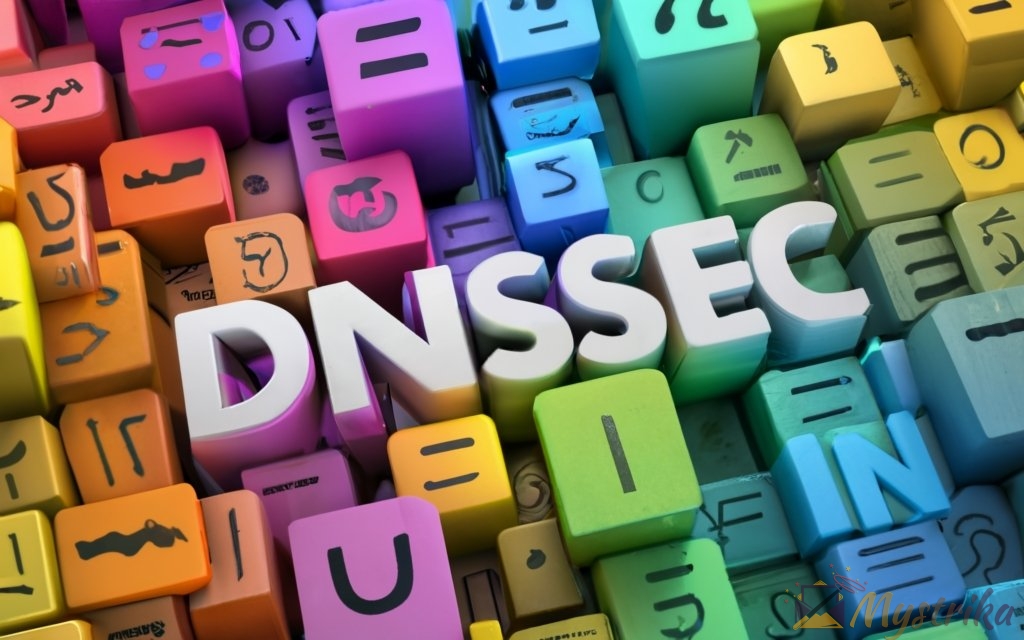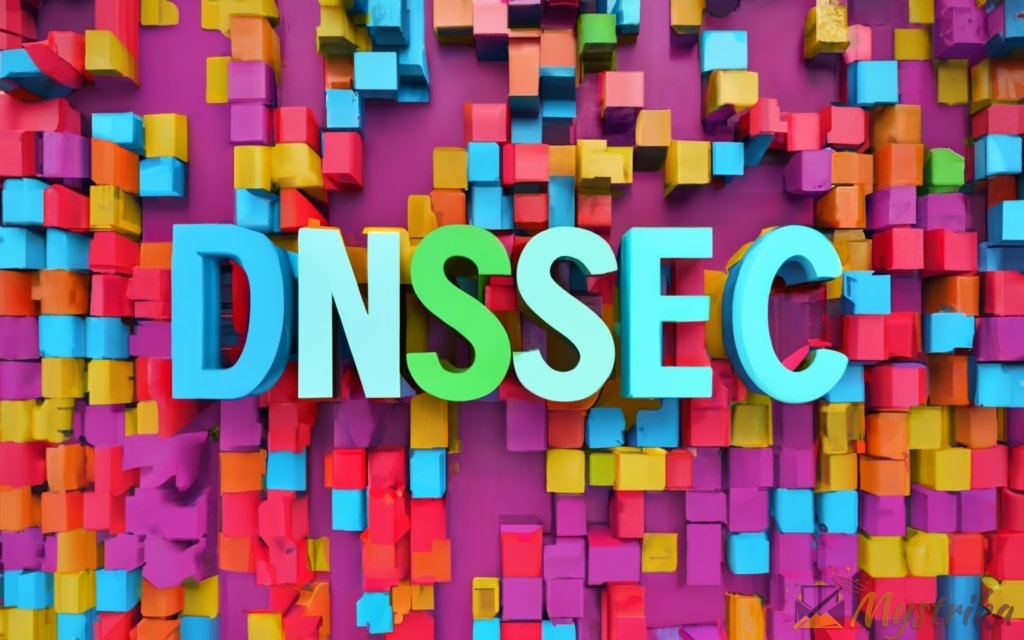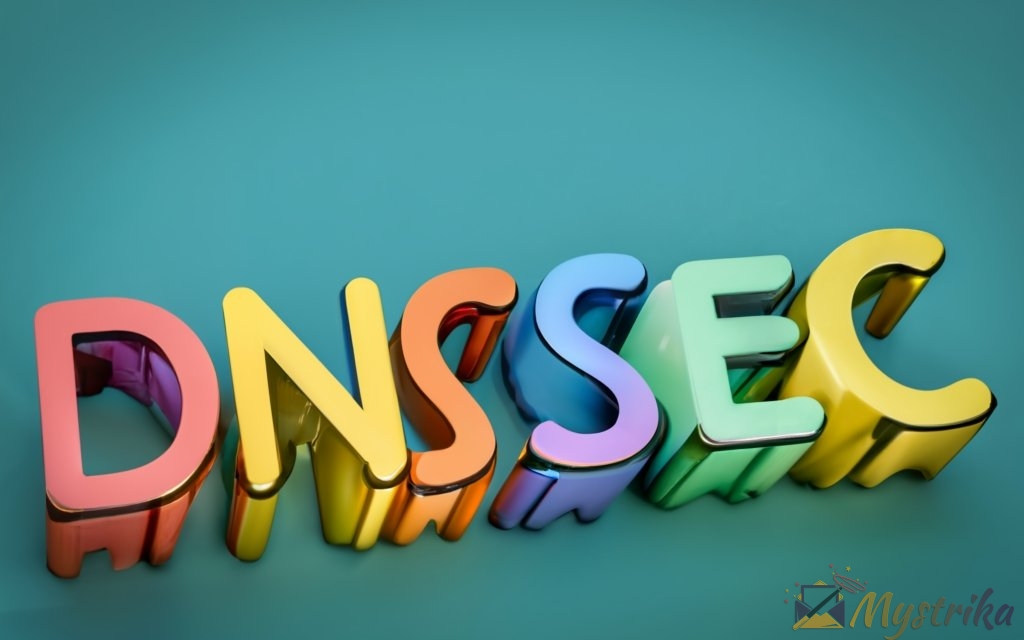With threats like domain hijacking and DNS cache poisoning rapidly rising, safeguarding your domain name system infrastructure has become an imperative for every organization operating online.
In this comprehensive guide, we’ll cover everything you need to know to fully protect your domain names and DNS servers. You’ll learn about:
- Critical domain security threats like phishing, DDoS, malware, and more
- The basics of how DNS architecture and resolution work
- Implementing the DNSSEC protocol to cryptographically validate DNS traffic
- Best practices like WHOIS privacy, proactive monitoring, and employee training
- Improving DNS performance, resilience, and encryption protocols
Avoid becoming the next security statistic. This guide equips you with in-depth knowledge to secure your online presence at the DNS layer. Let’s get started!
Understanding Domain Name Security Threats
The domain name system may be the backbone of the internet, but it was designed with accessibility and usability in mind – not security. This has left domains vulnerable to a variety of cyber threats that can have devastating consequences for organizations. Let’s explore some of the most common domain name security risks:
DNS Hijacking
DNS hijacking, also known as domain hijacking, involves an attacker taking over a domain by modifying key DNS settings like nameservers and DNS records. For example, a hijacker could point your domain’s DNS to their own malicious servers.
Some ways DNS hijacking can occur:
- Compromising the domain registrant’s account credentials via phishing or malware. This gives access to point the domain elsewhere.
- Exploiting weaknesses in the domain management interfaces of registrars and DNS host providers. Attackers try to find ways to bypass authentication methods.
- Manipulating DNS records directly, like altering nameserver (NS) records to redirect traffic under their control.
- Using social engineering tricks to persuade a registrar to transfer control. Criminals pretend to be the legitimate owner for access.
- Leveraging compromised security certificates or keys to forge requests appearing to come from the actual domain owner.
The impacts of DNS hijacking are severe. The hijacker can redirect your website visitors to fake phishing sites, display fraudulent or malicious content under your brand, break email and web hosting, steal user data, and essentially disrupt your digital presence.
According to ICANN, over 170,000 domain hijacking attempts are estimated to occur each year. Some notable examples recently are the hijacking of Russia’s Yandex by hackers and the takeover of MyEtherWallet domains.
DNS Cache Poisoning
DNS cache poisoning, also referred to as DNS spoofing, involves injecting false DNS records into a nameserver’s cache. This redirects traffic meant for legitimate domains.
For instance, an attacker can tamper with cached DNS entries and point requests for bankofthewest.com to their own IP address instead of the real bank’s servers. Users get directed to an imposter website controlled by the attacker, without realizing the misdirection.
Common goals of DNS cache poisoning include:
- Phishing – Users enter sensitive information on fake sites mimicking the real one.
- Malware distribution – Downloads get swapped with infected files.
- Ransomware attacks – Traffic gets redirected to pages that install ransomware.
- Data interception – Communication in transit is secretly monitored.
DNS cache poisoning works because DNS wasn’t built to validate that responses originate from authorized nameservers. Attackers simply trick the DNS resolver into caching incorrect DNS entries mapped to their own servers.
Some ways attackers poison DNS caches:
- Exploiting vulnerabilities in older DNS protocols. Weaknesses make it easy to inject false data.
- Leveraging DNSSEC misconfigurations. Errors in set up render validation ineffective.
- Tricking resolvers into amplifying an attack. Clever techniques coerce resolvers into bombarding targets.
- Manipulating internet traffic via routers. Attackers with network access alter IP address mappings in transit.
- Taking advantage of unsecured open DNS resolvers. Misconfigurations allow anyone to tamper with DNS caches.
Domain Name Spoofing
Similar to phishing emails, domain name spoofing refers to disguising a fake domain as the real one—often by using slight misspellings or character substitutions. This tricks users into visiting copycat websites controlled by the attacker.
For example:
- g00gle.com instead of google.com
- bank0famerica.com instead of bankofamerica.com
Visually, spoofing domains capitalize on the human brain’s tendency to skim over minor typographic differences. The URLs can look convincingly similar to popular sites.
Spoofed domains then enable a spectrum of deceptive activities:
- Phishing login credentials and credit card details by mimicking trusted sites.
- Spreading malware through fake downloads that users believe are legitimate.
- Intercepting emails and collecting sensitive communications.
- Impersonating brands for various scams.
Domain spoofs often get past spam filters because the domains themselves are registered and valid. Users clicking on links in emails or messaging apps may not notice they are headed somewhere malicious.
Defending against domain spoofing relies on vigilance by both providers and internet users. Measures like proactive monitoring for typosquats, raising security awareness, and inspecting links before clicking can help deter spoofing threats.
Domain Theft and Cybersquatting
Domain theft and cybersquatting refer to illegally obtaining ownership of domains that belong to someone else’s brand or trademark.
Squatters target popular or valuable domain names either for financial gain or to harm the brand’s reputation and customer trust. Some ways cybersquatting happens:
- Expiring domains after a lapse in renewal, then snatching them up.
- Finding domains with lapsed WHOIS privacy and registering them under the squatters’ name.
- Seizing domains during disputes or periods of transition like acquisitions.
- Guessing at domain typos or variations before brands can register them.
- Claiming domains for brands expanding into new regional or product markets.
Many squatters use the domains they’ve seized in fraudulent ways—like redirecting to dodgy sites or just displaying ads. Others try to extort the trademark owner for huge sums to get the domain back.
The legal recourses against domain theft include ICANN’s Uniform Domain Name Dispute Resolution Policy and national laws like the U.S. Anticybersquatting Consumer Protection Act. However, reclaiming hijacked domains often remains challenging, time-consuming, and expensive.
Proactive brand protection is key. Large corporations often register common typos and variations of their brand domains defensively—before cybersquatters can seize them. They also use domain name monitoring services to get alerts about expiring domains or changes in WHOIS data.
Phishing Attacks
Phishing refers to scams aiming to steal personal information by masquerading as trustworthy sources. Phishers often exploit domain names and DNS infrastructure to bypass protections and make their scams harder to detect.
Some phishing techniques that leverage the domain name system:
- Domain spoofing – Using lookalike domains, as explained above, to mimic legitimate sites for capturing logins and financial data.
- Subdomain tricks – Creating subdomains under real domains to fake authenticity in links. e.g. myaccount.google.com.info
- DNS cache poisoning – Redirecting users to phishing sites by altering cached DNS entries.
- DNS hijacking – Pointing domains to phishing site servers using compromised credentials.
- Typosquatting – Registering common typos of popular domain names then using them for phishing.
- IDN homograph attacks – Using exotic unicode characters in domains that mimic common Latin ones. e.g. аррӏе.com
- Domain shadowing – Exploiting customers’ dormant domains to create subdomains for phishing.
Sophisticated phishers combine multiple techniques for more convincing scams. They also regularly switch up domains and approaches to avoid blacklists and evade detection.
The most effective defense against phishing is a combination of technological measures, security awareness training for staff, and practicing cautious skepticism when encountering unsolicited communications.
DDoS Attacks
A distributed denial-of-service (DDoS) attack aims to overwhelm a target’s systems and make their website or applications inaccessible. DDoS attacks on DNS infrastructure can be especially disruptive.
By flooding authoritative nameservers with fake lookup requests, attackers can create bottlenecks that prevent legitimate DNS queries from getting through. This effectively takes down any websites relying on those nameservers.
DDoS attacks exploit the openness of DNS architecture. Anyone can query DNS servers, and resolvers must respond to all requests they receive. Attackers abuse this by maxing out nameservers’ capacity.
Some common methods used in DNS DDoS attacks:
- Traffic amplification – Spoofing the target’s IP address in small requests that generate enormous responses. DNS is prone to amplification.
- Protocol exploitation – Abusing DNS features like zone transfers to trigger resource exhaustion and crashes.
- Bandwidth oversaturation – Flooding nameservers with more traffic than their connectivity capacity.
- Resource depletion – Inundating DNS infrastructure with lookup requests that overwhelm capacity.
The impacts of successful DNS DDoS attacks include:
- Total unavailability of websites, email, apps, and other services.
- Slow page load times and intermittent connectivity issues.
- Frustration and loss of trust among the website’s visitors.
- Revenue and productivity losses during downtime.
With the growing size of DDoS botnets for hire, even short DNS outages can have massive financial fallout for businesses. Having DDoS mitigation capabilities and distributed resilient DNS infrastructure is key to reducing the risks.
Malware Injection
Attackers can also exploit DNS to spread malware or quietly redirect visitors to infected sites. One method is tampering with DNS settings to inject malicious responses.
For example, an attacker that compromises a domain registrant’s account can edit the DNS records to point the website or webmail server to their own malware-laden IP address instead.
Now the hijacker serves up malware to all visitors of that domain. On the surface, nothing looks amiss to users since they still see the expected domain in the address bar as the malware silently installs.
Another common tactic is tampering with resolver caches to inject domains with malware or unwanted content into query responses. When users visit popular but unrelated domains, they get redirected to harmful sites without realizing it.
Malware injection can also occur via:
- Poisoned DNS forwarders used by companies that redirect to malware servers.
- DNS rebinding attacks that bypass browser security to download malicious scripts.
- Compromised routers and DHCP servers providing users malicious DNS settings.
To guard against malware injection and redirection, both enterprises and individual internet users should take precautions like:
- Using DNS resolvers that offer DNSSEC validation and threat monitoring.
- Deploying antivirus and anti-malware tools.
- Being cautious of unsolicited links and unexpected traffic redirects.
- Monitoring DNS traffic for anomalies.
- Keeping software patched and updated.
While the domain name system faces an array of threats, taking proactive steps to lock down domains, manage DNS securely, validate responses, and monitor for anomalies can help mitigate the risks. Applying lessons from past DNS attacks and developing new techniques like DNS-over-HTTPS also offer promise for a more secure DNS future.

Why Domain Name Security Matters
For most companies today, the website is their most vital business asset and primary storefront. Customers expect to access websites, apps, email, and other services 24/7 with full reliability. Downtime or security compromises can have catastrophic effects.
This reliance makes domain name security a crucial priority. Let’s explore why securing domain names should be at the top of every organization’s cyber risk checklist:
Domains Represent Online Identity and Brand
Your domain name is your brand online. It establishes legitimacy and is intrinsically tied to your reputation. Internet users trust that visiting your domain will lead them somewhere authentic.
If hackers hijack or spoof your domain, they control how the world perceives you on the internet. They could plaster offensive content on your site or conduct phishing scams that defraud customers under your brand’s banner.
Recovering from the reputational damage of a compromised domain is challenging. Maintaining control of your domain ensures you represent your brand in the best light.
Impact of Compromised Domains
When a domain name falls into malicious hands, the consequences for organizations can be devastating:
- Website downtime – DNS disruptions that prevent visitors from accessing your site damages engagement, sales, and productivity.
- Data exfiltration – Phishers impersonating your domain can harvest customer details like logins and credit cards.
- Ransom demands – Criminals may hold your domain hostage until you pay up.
- Phishing – Spoofing your domain tricks users into giving up sensitive info to scammers.
- Malware outbreaks – Your site traffic gets redirected to infect visitors with viruses and trojans.
- Email interception – Sensitive communications get rerouted into criminal hands.
- SEO and traffic loss – Your rankings tank while the domain is disabled, hijacked, or expired.
Restoring business operations and user trust after a domain compromise often takes time and money. Being proactive avoids this scenario.
Financial and Reputational Damages
The hard numbers illuminate the massive monetary impacts tied to domain security:
- The average cost of domain hijacking is $30,000 per incident, accounting for lost business, recovery efforts, and brand repute. (Source: DomainTools)
- For large e-commerce sites, just one hour of downtime can result in over $300,000 in lost sales. (Source: Cloudflare)
- 81% of consumers will leave and never return to a site that has malware or security issues. (Source: BBB)
- 59% of businesses say a cyber attack damaged their reputation and brand value. (Source: Accenture)
These stark statistics make clear the devastating monetary and reputational impacts of domain name security breaches.
Legal Implications
Beyond immediate financial losses, failed domain security can also land companies in legal hot water:
- GDPR penalties – Compromised customer data may violate EU privacy laws that impose stiff fines.
- FTC actions – The U.S. FTC may sanction companies for security shortcomings leading to breaches.
- Class action lawsuits – Customers affected by data leaks or fraud via domains often pursue class actions.
- Duty of care – Failing to maintain online security can be grounds for negligence lawsuits.
- Insurance claims – Error and omissions insurance may refuse to pay out for “preventable” domain hacks.
- SSAE audits – Compromised domains can mean failing security control audits.
ICANN contracts also obligate domain registrars to uphold security standards. Lax practices that allow hijacking enable registrants to potentially sue registrars for breach of contract.
On top of immediate recovery costs, legal liabilities stemming from domain compromises can escalate expenses significantly.
Don’t Underestimate Domain Security
In summary, no business can afford to downplay the critical necessity of solid domain name security:
- Domains represent the digital identity customers trust.
- Hijacks and malpractice cause costly business disruption.
- Brand reputation and user loyalty suffer long-term damage.
- Legal repercussions and obligations carry more expenses.
Fortunately, prudent measures to register, manage, and monitor domains with security in mind substantially lower these risks. Prioritizing domain name security today prevents much larger problems tomorrow.

DNS Basics
Before delving into DNSSEC and other domain name security protocols, it helps to level-set on how the Domain Name System works under the hood. Understanding the key concepts of DNS architecture, name resolution, and record types provides context for where vulnerabilities exist.
Role of DNS
DNS functions as the internet’s phone book by mapping domain names to IP addresses. It translates human-friendly names like example.com to the numeric IPs like 192.168.1.1 that computers need to route requests.
Without DNS, you’d have to remember numbered IP addresses and type them into browsers to visit every site. Domain names act as memorable aliases for the underlying IPs.
Some key DNS responsibilities:
- Resolving domain queries to locate target IPs.
- Directing traffic to the correct destinations.
- Routing emails to their recipient servers.
- Enabling access to web, email, infrastructure, and applications.
- Load balancing traffic across IP resources.
- Geographically load balancing based on user location.
DNS Architecture
The global DNS framework consists of a hierarchy with different tiers handling specific mapping tasks:
Root nameservers – The entry point of DNS. Root servers provide IP addresses for Top Level Domains (TLDs) like .com and country codes. There are 13 logical root nameservers, with over 1,000 instances globally.
TLD nameservers – Handle lookups for their specific TLD. .com and .net requests go to Verisign’s TLD servers, for example. There are over 1500 TLDs today.
Authoritative nameservers – Manage DNS records for their delegated namespaces. Your domain registrar runs these to handle DNS queries for your registered domain.
Recursive resolvers – The DNS servers that do most lookups. Software in devices and locally caches results from recursing up the hierarchy to improve speed.
This structure allows DNS to scale globally by distributing resolution duties across layers specialized for their purpose.
DNS Resolution Process
When you enter a domain name into a browser, a DNS lookup goes through several steps to find the destination IP address:
- Local DNS resolver queries root servers to find the TLD nameservers for that domain.
- TLD nameservers provide the IP for the authoritative nameserver of the queried domain.
- Authoritative nameserver returns the IP address matching the fully qualified domain name.
- Resolver caches the IP response to speed future lookups.
- Browser initiates a connection to the IP to load the website.
Simplified 4-step process:
- Resolve TLD -> Get authoritative nameserver
- Ask authoritative nameserver -> Get target IP
- Cache IP response
- Browse to returned IP
This lookup process usually completes invisible to users in under 1 second.
DNS Record Types
DNS stores Resource Records (RR) that map domain information to various data. The most common DNS record types are:
A – Points a hostname to an IPv4 address. The most queried record type.
AAAA – Maps hostnames to IPv6 addresses. Enables IPv6-only DNS configurations.
CNAME – Alias of one name to another. Allows pointing domains to shared hosts.
MX – Defines email servers for the domain. Mail routing depends on MX records.
NS – Delegates DNS namespaces to nameservers. Binds domains to their DNS authority.
SOA – Stores admin and Zone authority metadata for a DNS domain.
TXT – Lets you enter freeform text remarks and configs for a hostname.
There are over a dozen more arcane record types that handle specialized mappings like DNS Server IPs (SRV records) and application data routing (NAPTR records).
Now that we’ve covered the ABCs of how DNS infrastructure and name resolution work, we’ll next look at how DNSSEC adds an authentication layer to prevent security threats related to spoofing, tampering, and hijacking domains.

DNSSEC Explained
DNSSEC strengthens DNS infrastructure by adding cryptographic authentication to verify DNS responses. This prevents tampering and forgery that otherwise leave DNS vulnerable to hacking and cyber attacks.
Overview: A Security Extension for DNS
As we covered in the previous section, standard DNS has no built-in means to validate that query results are authentic. This enables attackers to spoof responses or poison caches with false entries.
DNSSEC addresses this shortcoming by adding digital signatures to DNS records. Digital signatures are encrypted with the private keys of authoritative nameservers and validated using their paired public keys.
By checking the digital signature, DNSSEC provides a way to authenticate that a DNS response:
- Originated from the real valid nameserver for that domain.
- Has not been altered or corrupted in transit.
- Can be trusted as legitimate.
With DNSSEC enabled, hijacking, spoofing, and poisoning a domain becomes far more difficult. The forged responses generated by attackers will fail signature validation.
However, DNSSEC does not tackle threats unrelated to response integrity like DDoS attacks. Other protections still need to complement DNSSEC as part of a defense-in-depth strategy.
DNS Without DNSSEC is Vulnerable
Before diving into how DNSSEC works, let’s recap why standard (insecure) DNS is intrinsically vulnerable:
- DNS lacks built-in authentication of responses.
- Nameservers return responses to any lookup requests they receive without verification.
- Resolvers cache responses blindly without checking if they are legitimate.
These shortcomings enable different forms of DNS abuse:
Cache poisoning – Injecting false DNS records that redirect domains to attacker IP addresses.
Domain hijacking – Pointing domains to rogue nameservers under the attacker’s control.
Man-in-the-middle attacks – Intercepting DNS queries to return forged responses.
DNS spoofing – Manipulating DNS to make a fake domain appear legitimate.
Without a means to validate where records originated from, standard DNS is a prime target for manipulation and impersonation.
How DNSSEC Works
DNSSEC brings trust to DNS responses through a chain of digitally signed records that can be validated step-by-step. Here are the key elements that make DNSSEC work:
Digital signatures – DNSSEC signs records cryptographically so authenticity can be proven. Signatures are generated using the private key of authoritative nameservers.
Public-private key pairs – Each zone is signed by a Zone Signing Key (ZSK). A Key Signing Key (KSK) signs the ZSK. Resolvers can validate using the public keys.
New DNSSEC record types – DNSKEY, DS, RRSIG, and others provide the framework for signed responses.
Validation – Resolvers walk the chain of trust to authenticate DNS replies at each hierarchy level against keys.
The chain of trust – DNS zones are signed from the root down to individual domains. Each tier vouches for the tier below it.
Now let’s get into more specifics on how administrators enable DNSSEC and the technical validation process.
DNSSEC Set Up
For DNS administrators to implement DNSSEC, they need to:
- Generate public-private key pairs – The zone-signing (ZSK) and key-signing keys (KSK) per zone.
- Include public keys in DNSKEY resource records.
- Cryptographically sign each RRset with the zone’s private ZSK.
- Add the digital signature to the zone data as an RRSIG record.
- Provide DS record with hash of KSK to parent zone to chain trust.
- Configure resolvers to perform validation using DNSSEC public keys.
It takes proper generation and combination of these multiple elements to make DNSSEC work effectively.
How Validating Resolvers Authenticate Responses
When a DNSSEC-validating resolver receives a response to lookup, here is how it authenticates the answer:
- Fetch the requested RRset (e.g. A record) and its corresponding RRSIG from the authoritative nameserver.
- Obtain the DNSKEY and RRSIG for DNSKEY from the same authoritative nameserver.
- Use ZSK in the DNSKEY to verify the RRset’s signature matches its RRSIG.
- Fetch the DS record and RRSIG for DS from the parent zone.
- Get the parent zone’s DNSKEY and use KSK to verify the DS record’s RRSIG.
- Hash the child zone’s KSK and verify it matches the DS hash from parent.
- Repeat steps recursively up the hierarchy to establish a valid chain of trust.
If the entire chain to the trust anchor verifies, the resolver can consider the response authentic. Otherwise, it gets rejected as invalid.
DNSSEC Components
Some key components that enable the DNSSEC signature and validation process:
RRSIG – Contains the digital signature for an RRset signed by the zone’s private ZSK.
DNSKEY – Stores the public ZSK and KSK keys in order for resolvers to validate responses.
DS – Holds the hash of a child zone’s KSK and gets stored in the parent zone to chain trust.
Trust anchors – Hard-coded records that validate DNS root keys. Provides ultimate trust origin.
NSEC/NSEC3 – Enables proof of non-existence for names that don’t exist in a signed zone. Prevents spoofing missing records.
Proper interaction between these elements establishes and extends a chain of trust from root to individual DNS queries.
Benefits of DNSSEC
Implementing DNSSEC provides several security benefits:
- Prevents DNS spoofing, alteration, and impersonation.
- Stops cache poisoning redirecting domains to attacker IPs.
- Eliminates man-in-the-middle attacks intercepting DNS traffic.
- Ensures authenticity of negative responses for non-existent domains.
- Extends trust to all subdomains in signed DNS zones.
- Makes spoofing signed domains to conduct phishing/malware campaigns difficult.
- Enables secure DNS transport without needing encryption like VPNs or TLS.
- Reduces threats like HTTPS certificate misissuance and rogue mail servers.
For these reasons, DNSSEC is considered a prerequisite for bolstering DNS infrastructure security, not an optional add-on. However, some practical hurdles to DNSSEC adoption still remain.
DNSSEC Setup Considerations
While most top-level domains support DNSSEC at the registry level today, some challenges exist for implementation by domain owners:
Complexity – Manual setup and key management requires DNSSEC expertise. Missteps could break domains.
Cost – Maintaining valid signatures and keys introduces management overhead.
Key rollovers – ZSKs and KSKs must be periodically regenerated and updated.
Zone resigning – Any zone changes require re-signing and new signatures published.
Proof generation – Tracking NSEC/NSEC3 records for all unsigned data is arduous.
Fortunately, options like managed DNS providers can automate most tasks to simplify enabling DNSSEC. For registrars and registries, provisioning DNSSEC services in a scalable manner involves additional considerations like automating key ceremonies and providing emergency rollover capabilities.
The uptake of DNS-over-HTTPS and other evolving protocols may also pave the way for easier-to-manage alternatives to DNSSEC in the future. But for now, DNSSEC remains the definitive standard for signing and validating DNS data.

Best Practices for Domain Name Security
Now that we’ve explored key threats and DNSSEC in depth, let’s look at proactive measures organizations should take to lock down their domain names and mitigate risks. Follow these best practices to safeguard your online presence:
Register Domains Strategically
The domain registration process itself opens the door for potential security issues:
- Buy names defensively – Register common typos or variations of your brand before others can cybersquat on them.
- Remain anonymous – Use domain privacy services to mask your info from WHOIS listings.
- Maintain company ownership – Register under official legal business names rather than as an individual.
- Consolidate portfolios – Centralize domain management under a single account for consistency and oversight.
- Lapse monitoring – Get expiry notifications and have a renewal process to avoid any lapses.
- Change registrars cautiously – Follow ICANN procedures precisely when transferring domains to avoid loss.
Choose Secure Domain Registrars and DNS Hosts
Not all domain name registrars and DNS hosting providers are equal when it comes to security:
- Look for SOC2 certifications – Third-party audits validate security controls are in place.
- Require MFA – Multi-factor authentication prevents unauthorized account access.
- Check DNSSEC support – The provider should make signing zones easy.
- See if DNS traffic filtering – Options like anomaly detection and threat feeds help spot issues.
- Assess DDoS mitigation – Capacity to absorb and filter volumetric DDoS attacks is key.
- Validate redundancy – The DNS infrastructure should be globally distributed for resilience.
Utilize WHOIS Privacy Protection
By default, WHOIS listings publicly expose your name, address, email, and phone number. Masking this via WHOIS privacy services helps avoid:
- Targeting for social engineering and phishing attempts
- Identity theft using your details in other fraud
- Sales calls and spam to your business contacts
- Losing control if contact info becomes outdated
WHOIS privacy makes taking over your domains more difficult by hiding your info. It’s inexpensive so there’s little reason not to use it.
Proactively Monitor Your DNS
Vigilance in tracking DNS settings and performance helps spot anomalies early:
- Check configurations – Audit DNS records regularly to detect unapproved tampering.
- Monitor traffic – Analytics tools can spot unusual spikes that could indicate attacks.
- Confirm availability – Probe DNS from global vantage points to verify worldwide accessibility.
- Log security events – Review logs for potential access by unauthorized parties.
- Get resolution alerts – Know quickly if domains fail to resolve or suffer performance issues.
- Watch blacklists – Querying blacklists ensures your IPs stay off them to prevent email blocks.
Monitoring is invaluable for gaining visibility and responding promptly to incidents.
Require Multifactor Authentication
Mandating MFA introduces a substantial obstacle for account hijackers by requiring:
- A password and approval from a separate device like a mobile authenticator app or hardware security key.
- Contextual factors like approved locations or geoIP ranges.
- Biometric checks like facial recognition or fingerprints.
Reduce the risk of compromised credentials granting domain access.
Build In DNS Redundancy
Distribute DNS across multiple servers worldwide to eliminate single points of failure:
- Use Anycast routing – This networks distributed nameservers under one IP address that directs traffic optimally.
- Load balance queries – Shared loads prevent overload of any single server.
- Add geographic DNS – Having regional nameservers improves performance and continuity.
With redundancy, localized attacks or disasters can’t completely knock DNS offline.
Prioritize Employee Security Training
Technical controls can only go so far if staffers fall for social engineering around domains:
- Teach best practices – Cover tips like verifying changes before applying and using MFA.
- Raise awareness of risks – Phishing and phone fraud remain top attack vectors.
- Limit privileges – Only those needing access should have control of domains.
- Report suspicions – Encourage reporting odd requests or communications related to domains.
Well-trained employees with security top of mind offer another valuable line of defense.
For organizations seeking the highest level of domain name security, combining all of the above controls creates defense in depth reducing the chances of preventable compromise.
Other Options to Consider
A few other emerging capabilities to consider that enhance domain security:
TLS/HTTPS – Encrypts connections so domain traffic can’t be intercepted andmodified in transit.
Certificate transparency – Audit logs make spoofing HTTPS certs for domains difficult.
DNSSEC monitoring – Check DNSKEY records for unauthorized changes.
Email authentication – DMARC, DKIM, and SPF combat domain spoofingin email scams.
Vendor backups – If account access is lost, the registrar can roll back unauthorized changes.
Registry locks – Prevent even registrars from making changes without approval.
Domain theft insurance – Cover costs if hijackers still manage to seize domains.
No single control fends off every threat vector, but combining overlapping safeguards leaves minimal gaps for attackers to exploit.
Avoid Complacency
The biggest enemy of domain security is complacency. As long as everything appears fine, it’s tempting for even security-conscious admins to become lax over time. Avoid falling into that trap by:
- Regularly reviewing and updating domain protections as new best practices emerge. Don’t set and forget configurations.
- Conducting spot audits and drill exercises to validate processes work as intended. Make improvements where needed.
- Tracking security news related to registrars and DNS providers to stay on top of vulnerabilities.
- Not assuming existing precautions make your domains bulletproof from threats.
Proactively hunting for weak spots before criminals do prevents nasty surprises and keeps domains secured.

Improving DNS Resilience and Performance
In addition to security considerations, DNS infrastructure must also be engineered for maximum speed, reliability, and uptime. Various techniques exist to optimize DNS for resilience and performance.
Anycast Routing
Anycast routes traffic destined for a particular IP address to multiple servers in different geographic regions. This allows a collection of distributed DNS servers to share a single IP.
Benefits of anycast routing include:
- Redundancy – Local outages don’t affect global reachability. Traffic gets routed to the next closest server.
- Low latency – Queries get answered by topologically nearby servers, reducing lag.
- DDoS resistance – Attacks target the entire anycast IP range, diluting their impact across all servers.
- Flexible scaling – Adding and removing servers is easy since they share an IP.
Major DNS providers rely extensively on anycast for reliability and speed.
Load Balancing
Load balancing distributes query volumes across DNS infrastructures to avoid overloading any single nameserver. This prevents bottlenecks and improves responsiveness.
Load balancers route traffic based on:
- Server capacity – Servers with the most unused resources take more load.
- Geography – Requests get sent to local servers first.
- Latency – Queries go to servers with the lowest network lag.
- Random probability – Requests get randomly dispersed to equalize loads.
Effective load balancing ensures DNS resolution remains snappy even during traffic spikes.
DDoS Mitigation
Special filtering and traffic shaping techniques allow DNS providers to absorb and withstand even massive DDoS attacks. Common mitigation methods include:
- Blackholing – Traffic from known attack sources gets dropped.
- Rate limiting – Capping top throughput per IP blocks volume floods.
- Anycast filtering – Attacks routed through scrubbing centers that filter DDoS traffic.
- Overprovisioning – Maintaining excess capacity to withstand floods.
These measures isolate destructive attack traffic while allowing legitimate queries to continue unimpeded.
Caching Optimization
DNS caching stores query results like IP mappings locally or closer to users for faster repeat lookups. Optimal cache configuration improves efficiency:
- Shorter TTLs – Reduce time cached records remain valid, requiring updated results.
- Pre-fetching – Proactively resolve and cache likely future queries in advance.
- Geolocation-based – Cache records in geographic regions where they will be used.
- Consolidated caching – Centralize caching to maximize cache-hit ratios.
- CDNs for caching – Content delivery networks cache DNS responses globally.
Tuning cache parameters tailors DNS infrastructure for specific usage patterns.
Global Server Distribution
Having DNS servers dispersed worldwide in dozens of regions enables:
- Local redundancy – Nearby servers provide failover within geographic areas.
- Compliance – Serves regions legally requiring in-country DNS.
- Low latency – Nearby servers provide faster local response times.
- Attack resistance – Local problems don’t cascade globally.
- Throughput scaling – Adds resolution capacity in high-demand regions.
Proximity to users optimizes DNS uptime, speed, and availability.
In summary, DNS operators have many engineering knobs to tune for providing the volume, speed, and resilience required for optimal domain name performance and reliability in modern internet use cases.

The Future of DNS Security
The digital landscape evolves rapidly, bringing new potential threats and security capabilities. Continued innovation around protocols and risk mitigation will shape the future of DNS security.
DNS-over-HTTPS and DNS-over-TLS
Emerging standards like DNS-over-HTTPS (DoH) and DNS-over-TLS (DoT) aim to close remaining DNS security gaps:
Encryption – DoH and DoT encrypt DNS queries end-to-end, preventing tampering and snooping of traffic.
Authentication – Certificates authenticate the destination server, avoiding impersonation MITM attacks.
Circumvention – Encrypted transports prevent DNS manipulation on restricted networks.
Privacy – With encryption, ISPs and other network devices can’t see DNS queries and build profiles.
However, like DNSSEC, widespread DoH and DoT adoption faces challenges around implementation complexity, lack of legacy client support, and potential performance impacts that remain barriers to ubiquity.
Anticipating Emerging Threats
New attack techniques for hijacking and weaponizing DNS constantly emerge:
- DNS rebinding – Browser same-origin policies get tricked to allow malicious remote access.
- Domain shadowing – Exploiting customers’ registrations to host phishing and malware sites.
- Domain collisions – External global DNS queries clash with organizations’ internal networks.
- AI-enhanced attacks – Tools like generative adversarial networks create harder-to-detect spear phishing tactics.
Proactive threat modeling and intelligence gathering helps anticipate and prevent new forms of DNS abuse before they become widespread.
Next-Gen DNS Security Protocols
Ongoing research aims to design more resilient DNS infrastructure:
- Blockchain DNS – Tamper-proof ledgers make spoofing and altering records near-impossible.
- Quantum-safe DNSSEC – New cryptographic signing algorithms will counter future quantum computing threats.
- Automatic certificate issuance – Automating PKI issuance and renewal avoids outages when certificates expire.
- Failover enhancements – Improved caching and multiparty authentication enable faster failover when primaries fail.
Advances like these will bolster defenses as DNS remains a pivotal backbone of internet-scale systems.
The cat-and-mouse game between securing DNS and criminal innovation continues. Maintainingworld-class domain name security requires keeping pace with emerging technologies and threats through continuous learning, vigilance, and improvement.

Key Takeaways on Domain and DNS Security
In this extensive guide, we’ve covered a myriad of concepts around securing domain names, DNS infrastructure, and leveraging DNSSEC. Here are some key highlights to remember:
- Domains represent identity and trust – Your domain name conveys legitimacy for your brand and business. Keeping control ensures no impersonation.
- DNS bridges domains to infrastructure – The DNS resolution process connects domain names to backend applications and services.
- Core DNS knowledge is power – Understanding DNS architecture, nameservers, records, caching, etc. helps identify vulnerabilities.
- DNS was not designed for security – Protocols like DNSSEC bolster defenses by adding authentication DNS originally lacks.
- DNSSEC prevents spoofing and tampering – Cryptographic signatures validate responses originated from the true authoritative nameservers.
- Chain of trust anchors security – DNSSEC keysinterspermone domain to vouch for the next level down, establishing authority.
- Automation simplifies DNSSEC – Manual key management and signing is complex, but automation makes enabling DNSSEC easier.
- Registrars and providers matter – Domain infrastructure is only as secure as its weakest link. Scrutinize vendors carefully.
- WHOIS privacy adds protection – Masking your registration details in public listings makes probing harder.
- Employee education is vital – Technical controls cannot defend against social engineering without informed staff.
- Defense in depth is mandatory – No single measure thwarts all threat vectors. Use layers of overlapping security and monitoring.
- Complacency compromises security – Regularly audit configurations, drill incident response, and revalidate controls.
Safeguarding domains and DNS involves both a thorough understanding of risks and technologies as well as dedicating resources to ongoing protection and vigilance. But with prudent investment in security, the domain channel can remain an asset powering your online business instead of a liability.
Summary
This comprehensive guide explored all facets of securing domain names and DNS infrastructure. Some key lessons to remember:
- Domains represent online identity and trust. Keeping control over them is imperative.
- DNS bridges domain names to infrastructure and content, making it a security lynchpin.
- Core DNS knowledge like architecture, nameservers, and records reveals vulnerabilities.
- Protocols like DNSSEC authenticate responses to prevent spoofing and tampering.
- DNSSEC establishes a chain of trust anchored by signature-validated DNS keys.
- Automation simplifies the complex tasks of DNSSEC key management and signing.
- Carefully scrutinize domain registrars and DNS providers as their security is critical.
- WHOIS privacy, employee education, defense in depth, and vigilance all help secure domains.
- Monitor configurations, drill incident response, and periodically revalidate controls to avoid complacency.
With smart domain and DNS security investments, businesses can confidently build their brand and serve customers online with reduced risk.
Let us know if you need any assistance securing your online presence. WPMU DEV offers advanced domain security solutions to help protect your web assets. Contact us to safeguard your digital business infrastructure.
Frequently Asked Questions
Q: What is the difference between DNSSEC and DNS security?
DNSSEC refers specifically to the protocol extension for cryptographically signing DNS records. DNS security is a broad term encompassing all methods for protecting DNS infrastructure.
Q: Does DNSSEC provide encryption?
No, DNSSEC does not encrypt DNS traffic. It digitally signs records to validate they have not been altered or forged. DNS-over-TLS and DNS-over-HTTPS provide actual encryption.
Q: Can DNSSEC prevent DDoS attacks?
Unfortunately no. Since it focuses on response authentication, DNSSEC does not mitigate threats like DDoS that overwhelm infrastructure with traffic volume. Additional DDoS protections should be used.
Q: Does DNSSEC replace the need for SSL certificates?
Definitely not. DNSSEC only authenticates DNS data, it does not encrypt web traffic. SSL/TLS certificates are still essential for establishing secure HTTPS website connections.
Q: What happens if DNSSEC validation fails?
If a DNS resolver cannot fully validate the chain of trust for a DNSSEC response, it will return a SERVFAIL error instead of the faulty response.
Q: Can visitor DNS resolvers disable or ignore DNSSEC?
Yes. Validating resolvers enforcing DNSSEC provides the most security, but clients may use non-validating resolvers that ignore DNSSEC records.
Q: Does DNSSEC support wildcards?
No. DNSSEC signs individual hostname records. It does not support wildcard signatures covering multiple subdomains. Each subdomain must be individually signed.
Q: Can DNSSEC prevent domain hijacking?
It makes hijacking more difficult by requiring access to the domain’s private cryptographic keys to generate valid signatures. However, social engineering or attacks against the registrar potentially could still allow hijacking.
Q: What happens when DNSSEC signatures expire?
Signatures have a time-to-live before expiring. After expiry, resolvers treat responses as invalid/failed. Servers must periodically re-sign RRsets before current signatures expire.

